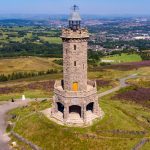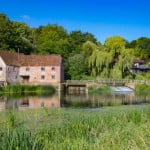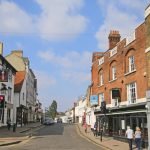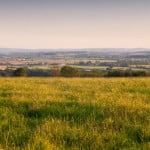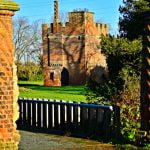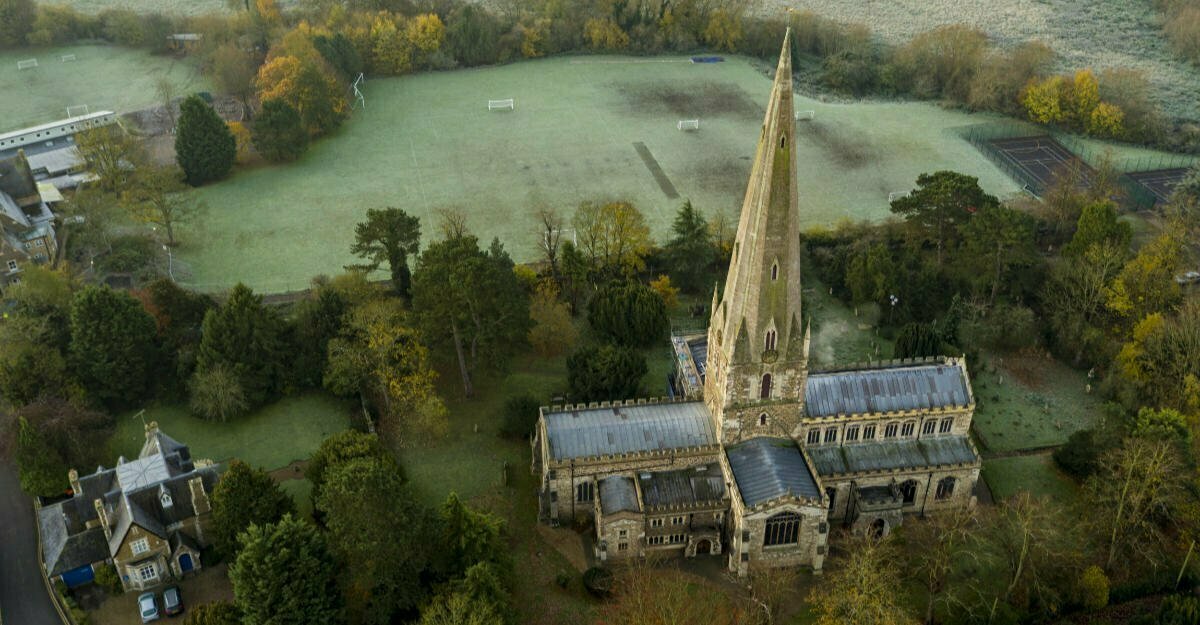
Situated near the Chiltern Hills in Bedfordshire, many a visitor is enticed to stay in Leighton Buzzard. With Milton Keynes on one side and Dunstable on the other, this delightful hillside town is about 36 miles outside of London. The town is on the banks of the River Ouzel which acts as a boundary between Leighton Buzzard and neighbouring Linsdale.
Let’s find out a bit about the history and see if we can figure out how they got such intriguing names. After that, we will cover some fun trivia about Leighton Buzzard, and even cover the best things to see and do when you visit.
The Early History of Leighton Buzzard
Leighton Buzzard was already a busy market town when King William the Conqueror invaded Britain in 1066. The true origins of the town disappeared over time, but we do know the land was occupied in 571. Leighton Buzzard was part of Catuvellauni tribal lands. They were an ancient Gaulish Celtic tribe who occupied southeastern Britain before the Romans invaded. Their name translates to “War Chiefs” and they owned a substantial area of the land.
There is evidence that people occupied Leighton Buzzard even earlier than the tribes existed. Archaeologists uncovered Iron Age and Palaeolithic tools in the area. Mesolithic, Neolithic, and Bronze age artefacts have all emerged from the ground around Leighton Buzzard. We might only have written records of the town from 500 AD onwards thanks to the Roman’s love of writing – but the town was there a long time before the Romans arrived.
The Bedfordshire archives report the presence of a Roman Well near Leighton Buzzard. Locals found Roman pottery near Tiddenfoot Waterside Park, where archaeologists’ also uncovered human remains. So Romans lived here long enough to die and see burial. The area was active enough that it had its own water source. Churchgoers have even discovered Roman coins in the churchyard.
After the Romans retreated in the 4th century, Leighton Buzzard gained its valuable marketplace. Archives from this time show the town was the site of a battle between Britons and Saxons in the 5th century[i]. The Saxons won, of course, and the town became Saxon run for about four hundred years. By the 800s, the Vikings were raiding nearby, travelling up the Ouzel to attack the town itself. Again, the river became a battleground.
By the time of the Domesday Survey, this town had gone through a lot. Let’s turn to the Domesday entry next to see what it looked like moving into the Middle Ages.
The Domesday Survey of Leestone
By the time of the survey (1086), King William was an established ruler. Leestone, as it had become known, shared its name with a second town. It’s agreed that the 12th-century rule of the Dean of Lincoln saw him add the local representative’s name to the town’s name to differentiate it from the other Leestone, now Leighton. Leestone became “Leestone de Bussar” after Thomas de Busar. Over the years, it became Leighton Buzzard.
Another important note of this period is that we get to see what lands belonged to whom. At the time, the population was 126 households, making it one of the largest in England. It had three owners but all of them were King William. He owned:
- 88 villagers, 32 smallholders, and 2 slaves.
- 52 ploughlands with meadow for 40 ploughs, woodland for 100 pigs, and two mills.
- The land was worth over 22 pounds, a kingly sum.
You can read the full entry for yourself here. The existence of the three landowners just shows that there were three owners in 1066 when he invaded. After this, he was the sole owner.
In 1189, a Cistercian monastery grew up around the town. It was an addition for Woburn Abbey, which took 35 years to build. In 1164, Henry II gifted the Manor of Leighton to the Abbey of Fontevrault in Normandy. St. Mary’s Church opened in 1166 as a possession of the Beauchamp family. If you hadn’t guessed by now, the Normans liked the plump lands in the south. In the late 1100s, the Norman abbey reciprocated by opening a cell in Leighton called Grovebury. In the year 1200 the King, then John gave the manor to the Abbess.
Medieval Leighton Buzzard
In 1254, the town gained permission to hold a 3 day fair on St. Dunstan’s Day. The modern All Saint’s Church began in 1277 but they did not finish it for some time. Edward I granted a charter to Fontevrault Abbey to confirm possession of the manor. By 1316 this changed and the manor passed to Edward’s daughter Lady Mary of Woodstock.
In 1330 residents built the market cross. The Black Death arrived in 1349, the overall count for England was one-fifth of the population. In Leighton Buzzard, two successive vicars at All Saints died from plague.
In 1361, the manor passed back to the hands of the abbey. It passed again to Alice, the Duchess of Suffolk, in the 1400s. The dissolution of the monasteries under Henry VIII put a final nail in the coffin for the Abbey. By 1600 the population of the town was 1,700 people.
That’s a neat place to take a break and have a peek at some fun trivia from the town. We can get back to the Industrial era in a moment.
Interesting Facts About Leighton Buzzard
In this section of our travel guides, we like to share any gossip with you that we found during our review. Here’s all you need to know about Leighton Buzzard but were too afraid to ask:
- The Grand Union Canal opened here in 1801. It is the longest merged canal in all of England. It fell to industrial disuse in 1932 but is still home to a few boats.
- Leighton Buzzard twinned with Coulommiers in France as of 1958.
- The Great Train Robbery happened at Bridego Bridge, just outside of town.
- We almost lost All Saints Church to a fire in 1985 but its congregation lovingly restored it.
- The town has an odd tradition called the Wilkes Walk. Every year, a procession from All Saints goes to the almshouses of town – or North Street – and says a service. They are supposed to follow this with 10 shillings. Nowadays they have buns and lemonade, instead of 10 shillings.
Now that we’ve covered all that exciting gossip, it’s time we got our history heads back on. Here’s a little more of the history behind the town.
Leighton Buzzard during the Industrial Era
Those same almshouses existed as of 1630 when Edward Wilkes founded them for 8 local poor women. The town was then extensively damaged during the English Civil War of 1644. The south side of Leighton was set alight, with damages valued at £14,000. In 1650, parish records show the levy of fourpence on every household to repair the Market Cross.
Construction of the Grand Junction Canal (renamed Grand Union Canal later) began in 1793. In 1789, the Friends’ Meeting House opened on North Street.
In 1831 the town’s population was 2,749 people. The Poor Law Union was formed in 1835, opening a new workhouse for the poor. The Swan Hotel opened in 1840, followed by the railway station in 1848. Locals repaired the Market Cross again in 1851. It cost the town £350.
In 1852 the town gained a timber market toll house. The Town Hall and trading happened here. The Corn Exchange didn’t remove the traders until 1862. in 1864 the town gained the Wesleyan Chapel. St Andrews Church opened in 1867. The football club started in 1885. By 1891 the population was 6,704. In 1892 the Baptist Church opened.
Modern Day Leighton Buzzard
By 1911, the town had 6,782 residents, still very different from the modern 30k plus.
The town gave heavily during the wars. In WWI the local youth lost 171 people. There are 228 names on the memorial from WWII. It also recalls the Korean War.
In 1919 the Market House became a Fire Station. The same year, the Light Railway opened to haul sand from quarries to the town. The war memorial was unveiled in 1920 and used undressed granite weighing 22 tons. Cedars School opened in 1921 and in 1926, underwear manufacturer Gossard opened their first factor in Leighton Buzzard.
In 1931, a rail disaster saw six people die when a Glasgow to London train derailed at cross points near the town.
In 1935 the local RFC club got together.
By 1961, the population was 11,745 people. In 1963, the Great Train Robbery took place near the town. In 1991 the parish twinned with Titisee-Neustadt, Germany.
The population in 2001 was 32,417. In 2005 a local sculpture known as The Fly Past Sculpture opened. In 2010, the modern town received a High Silver award for Anglia in Bloom.
Modern Leighton Buzzard is very different from the settlement perched on the side of the hill that the ancient tribespeople saw as a fat land with a good vantage point. It’s home to many of us, it’s been a wealthy place to tend the land and reap the soil. It’s green and leafy, and it’s the kind of place you want to settle down in and whack up a picket fence. It’s nice. Go visit and see for yourself.
Famous People from Leighton Buzzard
In this section, we devote a little time to digging up the celebrity dirt from the town we are reviewing. In this case, we want to know which celebrities were born here, live here, and occasionally shop at the local Tesco. Some of the famous people from Leighton Buzzard include:
- Lots of footballers, as is traditionally British. Including Alan Biley, Derek Reid, and Adam Cunnington.
- Jim Kempster, international speedway racing star
- Surrealist writer and poet Philip O’ Connor was from here
- Eccentric poet and jewellery designer of the Industrial era Hester Wagstaff was born here.
- Children’s author Mary Norton
So you shouldn’t go to the supermarket in your pyjamas and curlers if you’re here on holiday.
The Best Leighton Buzzard Attractions
The best part of any town tour guide from Five Minutes Spare is when we review the attractions. Whether you are here for a few days or just passing through, here are the best sights, sounds, and things to do in Leighton Buzzard.
Historic Sites and Landmarks
Leighton Buzzard is best known for two things, being the home of the Great Union Canal, and trains. The Great Union Canal connected the town to London during its early uses in the Industrial period. Nowadays the canals see use by pleasure boats, families, and wildlife. The Canal has become a local place to walk dogs or enjoy the outdoors. There’s even a canoe club that sometimes organises events.
The Leighton Buzzard Railway is another local legendary landmark. The railway is England’s longest and oldest narrow-gauge railway line. They operate steam trains on it nowadays, and you can go along for the ride. The line is five miles long and they run it up to five times a week in peak season. You will learn about the history of the steam engine and get to ride on one too. Kids, grandparents, mums, and dads all love it. Check running times before you go to avoid disappointment.
Although closed until 2024, look out for the extensive refurbishments at the Woburn Abbey. Less of an abbey and more of a rich country home, this building is the current residence of the 15th Duke and Duchess of Bedford. It seems like the royals in England gave things to the church a lot, with the expectation that they would give it back at some point for their family members to live in. We smell tax evasion… the building’s striking though. Who needs all those rooms to live in? The place is like a palace. We can’t think how striking it will be when finish upgrading it.
Galleries and Museums
Although not technically a gallery, we have heard that the Ascott House has some wonderful collections of art and furnishings. It has fantastically well-tended gardens, too. They are open seasonally so check before you go. They have a lovely garden system to walk around, shops of their own, a café on-site, and plenty of things to see and do in the summer. This is a Georgian manor so the architecture alone makes it worth the visit.
The town has its own museum. It’s a sand museum. Companies quarried sand here throughout the industrial period. You can visit some of the sandpit sites or learn about the many uses of Leighton Buzzard sand all over the world. It’s famous for its versatility in the construction industry. The sand museum is interesting for those who want to study geology or mining. It sometimes runs school groups and a charity owns and operates it.
The nearest real gallery is at the Tecton Art Gallery in Milton Keynes. There is a picture framer in town but you need to provide the pictures.
Outdoor Attractions
Locals swear by Rushmere Country Park for long walks in the summer sun. This place fills up quickly if you want a good sunbathing spot. Run by the Greensand Trust, Rushmere has heathland, moors, woodland, and more to enjoy. It’s the kind of place you could explore for years and never get sick of it. There are over 500 acres here, and it’s considered a working woodland. This just means that rangers carefully manage it to work harmoniously. The rangers remove dead or falling trees, the habitat is nurtured, and you are sure of a wonderful experience every time.
Kids love the Parson’s Close Recreation ground here. There are fountains in summer, lots of swings, some lovely green grass, picnic benches… it’s just generally a wonderful place to take the kids on a Sunday afternoon. It has a new adventure playground area that kids adore. Let them loose in a safe space to burn off steam, feed them their Sunday roast, then send them to bed.
Another firm favourite among adults with kids is the Tiddenfoot Waterside Park. This place used to be a quarry back in the 60s, where it was quarried since the 1920s. Now that the excavators have moved out, it is being reclaimed by nature. Shrubbery lines the river on either bank, with young trees providing refuge for a growing bird population. This area is popular among fishing enthusiasts. There are walking and cycling paths throughout although there’s plenty of room to go off the path and explore. Take your wellies.
Sports and Recreation
Falling loosely into the recreation category, take the kids to the fun zone found at the Mead Open Farm. There are plenty of animal-based activities here, including petting and exercising. There is an outdoor hard play and an indoor hard and soft play, to keep the little ones amused. You can become a member and even book it for parties and other extraordinary events. You can go along in spring when it’s lambing season for the best times to visit.
In Leighton Buzzard, you have the choice of the local golf club or the Kingsway Golf Centre. The local golf club opened in 1885.
You have a youth club in Leighton Buzzard Athletic, or you have the local football club, Leighton Town FC to choose from. There’s also the Leighton United Football club, just for kicks.
There’s the Rugby club too if that’s your preferred sport.
Shopping and Retail
You can visit the Grovebury Retail Park just outside of town to the southwest. If that doesn’t suit you, the best shops are around the town centre. Leighton Buzzard town centre has a market every Tuesday and Saturday morning. The bigger spread is at the weekend. Take advantage and shop for locally grown and made produce.
Other Notable Attractions
You may not have found what you are looking for yet and that’s OK. If you don’t think this is the right town for you, remember you can check out dozens of other travel guides for local places in the UK over on our website. If not, stick around and check out these other notable attractions in and around Leighton Buzzard:
- Look into a visit with the Bald Buzzard Alehouse. They have a varied blend of English ales to whet your whistle with.
- The Leighton Buzzard Brewing Co. offers tours and experience days for those that want to sponsor locally produced ales.
- Visit the Leighton Buzzard Library Theatre to see a show.
- Visit the Parish Church of All Saints to admire that architecture.
- Take a walk along the canal and see what all the fuss is about.
- Visit the Leighton-Linsdale Children’s Trail. Scattered throughout the two towns are many hidden items for kids to spot, including bears crawling up buildings.
There are things to do in the surrounding countryside that we haven’t even touched on yet. So go explore this lovely area of the country and enjoy some locally sourced fair while you’re at it.
How to Get to Leighton Buzzard?
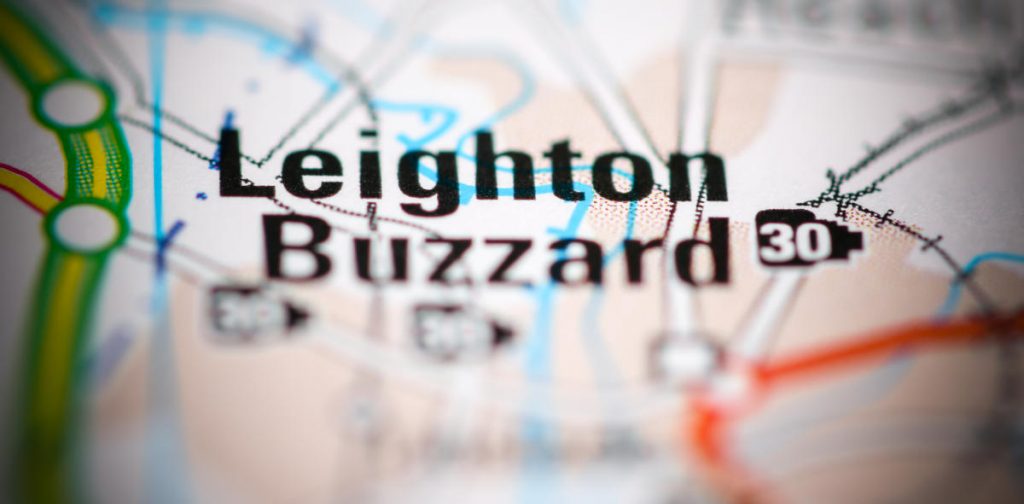
Image: SevenMaps/Shutterstock.com
Now that you know what you want to see and do when you visit, it might be helpful to know how to get there. Here is the most basic direction to Leighton Buzzard that you are ever likely to hear. Do try not to get lost.
By Road
Follow the M1 north out of London then veer west when you see signs for Luton.
By Rail
Leighton Buzzard train station is on the London North-western Railway line.
By Air
The nearest airport is London Luton airport.
By Sea
Sorry, no access – the closest beach is Bell Wharf around 63 miles away… but given the Vikings could sail up the Ouse and then the Ouzel you could too. It would help if you have a longboat handy though. You also have access to the Grand Union Canal if you want to arrive by boat.
Got Five Minutes?
If you enjoyed reading through this five-minute take on a town near you, why not see if your own town is listed on our pages? If not, pop onto Facebook and lend us a follow. We appreciate every helping hand we get.
[i] https://www.leightonlinslade-tc.gov.uk/history-of-the-town/
